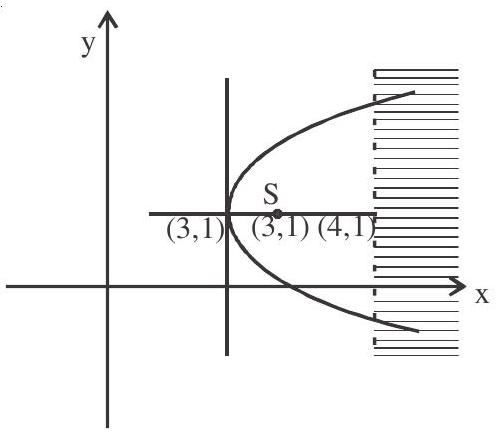PARABOLA-8
Chord of Contact
Let
Equation of tangent at
Equation of tangent at
Both lines pass through
Hence
Equation of chord whose midpoint
Equation of
Reflection Property of Parabola
Module - 7
Let
So
Also,
Hence
Also
So PN normal bisects

Therefore PI is incident ray then PS is reflected ray. So any ray incident parallel to axis of the parabola after reflection it passes through focus.
Examples
1. If three normals can be drawn to the parabola
(a).
(b).
(c).
(d).
Show Answer
Solution:

For real three normal’s
as
Answer: d
2. A circle and a parabola
(a).
(b).
(c).
(d).
Show Answer
Solution: Let equation of circle be
and equation of parabola is
Solving it, we get
Answer: a
3. Maximum number of common normals of
(a). 3
(b). 4
(c). 6
(d). 5
Show Answer
Solution: Normals of
For common normal
This mean there can be atmost 4 common normals
Answer: b
4. The curve described parametrically by
(a). a pair of straight lines
(b). an ellipse
(c). a parabola
(d). a hyperbola
Show Answer
Solution:
Answer: c
5. If
(a).
(b).
(c).
(d).
Show Answer
Solution: Normal to
Answer: b
6. The equation of the common tangent touching the circle
(a).
(b).
(c).
(d).
Show Answer
Solution: Equation of tangent to the parabola is
Equation of common tangent is
Answer: c










